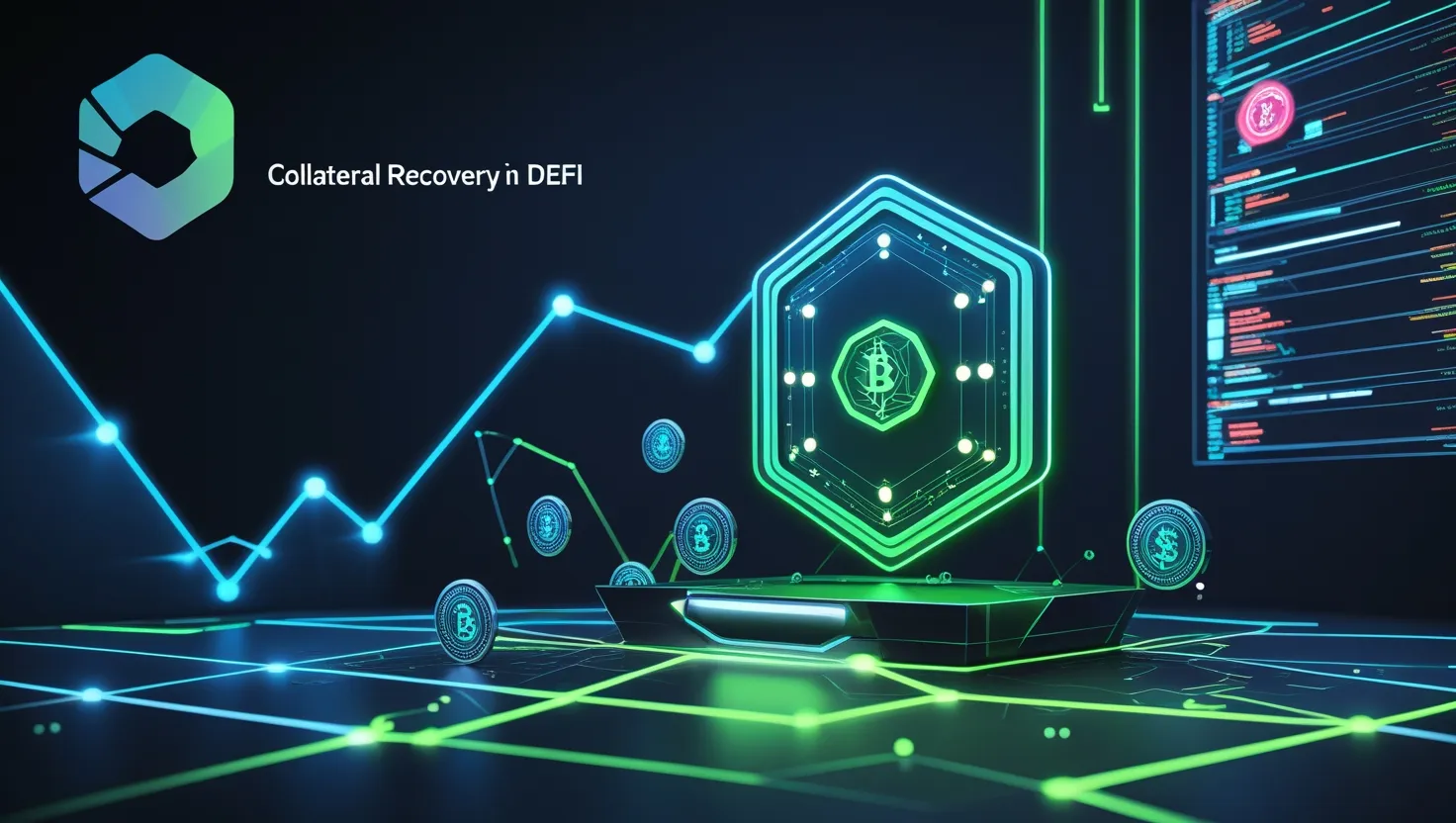Collateral Recovery in DeFi: How Crypto Liquidations Work
Collateral Recovery in Crypto: How DeFi Manages Liquidations and Asset Seizures
Crypto collateral recovery is how smart contracts repossess and sell assets that were frozen as collateral when a loan was not sufficiently collateralized. It is a trustless repossession process, done in real-time, by protocols like Aave, Compound, and other NFT lending and DeFi platforms. Its purpose is to keep the protocol stable—done instantaneously, openly, and without the involvement of intermediaries.
Table of Contents
- What Is Collateral Recovery in DeFi?
- How Smart Contracts Handle Liquidation
- Case Study: Aave’s Liquidation Engine
- NFT-Backed Loans and Recovery Risks
- Flash Loans, Liquidation Bots, and On-Chain Frenzy
- Cross-Chain Recovery: The Next Frontier
- Key Takeaways for DeFi Users and Builders
- Frequently Asked Questions
What Is Collateral Recovery in DeFi?
Collateral recovery is self-executing whenever the collateral value of a borrower dips below the minimum loan-to-value (LTV) threshold. When this happens, liquidation is triggered by smart contracts as they auction the collateral to third-party liquidators. The liquidators typically pay off part of the debt of the borrower for a discounted piece of collateral, promoting timely intervention and participation.
How Smart Contracts Handle Liquidation
Liquidation processes are integrated directly into DeFi lending protocols. When the health factor of a loan dips below a certain threshold, the protocol initiates the debt into liquidation. Third-party agents—usually bots—can settle some of the debt and repossess the collateral, earning a reward for their efforts. All of this occurs on-chain, meaning transparency, speed, and efficiency.
Protocols depend on oracle feeds to track real-time asset prices. When market prices plummet, the liquidation window is activated, and the first to act acquires the collateral.
Case Study: Aave’s Liquidation Engine
Aave has a health factor and imposes a liquidation limit. If the limit is violated, anyone can come in and liquidate 50% of the debt. In return, they get the equivalent collateral and a liquidation bonus of about 5–10%, depending on the asset.
This process enables rapid participation and protects against unhealthy poses undermining the entire system. The liquidation mechanism of Aave is efficiency-maximizing, predictability-fostering, and system-preserving.
NFT-Backed Loans and Recovery Risks
With NFTs, it is more difficult to recover collateral. They are non-fungible, thinly traded in most instances, and difficult to price appropriately. NFT lending platforms typically whitelist high-value collections and apply conservative LTV ratios. Upon default, the platform can transfer or auction the NFT, but liquidity remains a problem. Some protocols are experimenting with fractionalizing NFTs to increase liquidity and provide smoother liquidation processes.
Flash Loans, Liquidation Bots, and On-Chain Frenzy
Flash loans are one of the most valuable weapons for liquidation bots. They enable users to borrow capital in massive quantities without collateral, provided that the loan is repaid in the same transaction. Liquidators leverage flash loans to execute liquidation trades instantly in a fraction of seconds, 24/7, by monitoring protocols at all times.
Tenderly, EigenPhi, and Dune Analytics are among the weapons used by liquidators for analysis and planning. Timing is of the essence—being first in queue can be highly rewarding.
Cross-Chain Recovery: The Next Frontier
As DeFi grows on multiple blockchains, liquidations become complex. As an example, a user can borrow on Arbitrum against Ethereum collateral. Liquidating such positions requires synchronized cross-chain price feeds and bridging smart contract logic.
Platforms like LayerZero and Axelar are developing solutions to enable smooth cross-chain recoveries. Until then, cross-chain collateral arrangements incur additional risk and latency.
Key Takeaways for DeFi Users and Builders
Collateral recovery mechanisms are essential to guaranteeing the integrity of decentralized lending platforms. They act as a hidden insurance, ensuring protocol solvency and user trust. Understanding how liquidation works is essential to safe borrowing and to developers aiming to maximize resilience.
For coders, tuning recovery mechanisms—such as oracle speed, liquidation rewards, and flash loan inclusion—may mean the difference between a stable or unstable system. For traders, knowing your liquidation points avoids unnecessary loss and enables efficient risk management.
Frequently Asked Questions
What triggers collateral recovery in DeFi?
Once a loan becomes undercollateralized—its value falls below the minimum LTV ratio—smart contracts will automatically initiate liquidation.
What happens to my crypto if I get liquidated?
Part of your collateral is sold to pay off your debt. The liquidator buys this collateral at a discount, and you may be left with whatever remaining assets are left over after the process.
Can NFTs be used as collateral?
Yes, platforms like Arcade and JPEG’d offer NFT-backed loans, but liquidation is more complex due to valuation and liquidity concerns.
Is flash loan only for liquidation?
No. While it’s a favorite among liquidators as much as it is, flash loan is also used in arbitrage, collateral exchange, and protocol exploitation.
Which protocols have the most powerful liquidation models?
Pioneers in the field of automated optimal liquidations are Aave and Compound. And then there’s the likes of Venus, Liquity, and Solend that provide robust models depending on the chain and app.
Collateral recovery mechanisms need to be well understood when investing responsibly in DeFi, when borrowing, lending, or launching new protocols.




